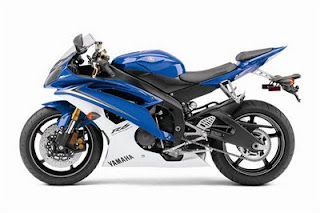The
motorcycle has a long history in this country. The
motorcycle is already present in this country since I was under Dutch occupation, and was named the East Indies, Oost Indie, or East India.
Existing data mentions that motorcycle present in Indonesia since the year 1893 or 115 years ago. Uniquely, although at the time this country was still under Dutch occupation, the first person who has a motorcycle in this country are not the Dutch, but English people. And, the man named John C Potter, the day-to-day work as a Machinist First Oemboel sugar factory (see Bannerman) Probolinggo, East Java.
In the book of Satan Crete (de duivelswagen) told how John C Potter books themselves booked into the
motorcycle manufacturer, Hildebrand und Wolfmüller, in Munich, Germany.
The bike arrived in 1893, one year before the first car arrived in this country. That makes John C Potter became the first person in this country who use motor vehicles.
Hildebrand made motorcycle und Wolfmüller was not using chains, not to use gears, not using a magnet, not using the battery (batteries), not using the coil, and not using electric cables.
The motorcycle was carrying a horizontal two-cylinder engine that uses gasoline or naphtha. It takes about 20 minutes to turn on and a stable engine.
In 1932, this motorcycle was found in damaged condition in the garage at the residence of John C Potter. The bike is sitting for 40 years on the corner of the garage in the untreated state and rust.
Top-mechanic mechanic help marines in Surabaya, a motorcycle's John C Potter was restored (corrected as before) and stored in the editorial office weekly De Motor. Then the antique motorcycle museum trafficked into traffic in Surabaya, which is now no longer known where the location.
Along with the number of cars, the number of motorcycles continues to grow. Born clubs touring motorcycle, whose members are brass planters and sugar factories. Motorcycle brands sold in this country, starting from the Reading Standard, Excelsior, Harley Davidson, Indian, King Dick, Brough Superior, Henderson, to Norton. Brands present motorcycles in this country can be seen from the ads motorcycle that was published in newspapers at the time of the year 1916 until 1926.
Cross Java
Not to be outdone by car drivers, motorcycle riders were trying to record a record for the trip across Java from Batavia (Jakarta) to Soerabaja (Surabaya) which is about 850 kilometers.
Then, May 16, 1917, Frits undergraduate and Wim uijmers which in turn Wygchel motorcycle repair Excelsior posted record Gerrit de Raadt. They record 20 hours and 24 minutes, with an average speed of 42 kilometers per hour.
The record did not last long. Nine days later, May 24, 1917, Goddy Younge with Harley-Davidson motorcycle to record a new record with a record 17 hours and 37 minutes, with an average speed of 48 miles per hour.
Record that had lasted for five months before it was broken by Barend about that Dam Indian motorcycle in 15 hours and 37 minutes on September 18, 1917, with an average speed of 52 miles per hour.
See his record broken by Barend ten Dam, six days later, 24 September 1917, Goddy Younge from Semarang carve out a new record again with a record 14 hours and 11 minutes, and the speed of Harley Davidson motorcycles are driven an average of 60 miles per hour .
In the early 1960s, began to enter all the Vespa scooter, which was followed by Lambretta scooters in the late 1960s. At that time, in all Japanese motorcycles, Suzuki, Honda, Yamaha, Kawasaki and later.
Along with the passage of time, Japanese motorcycles dominate the motorcycle market in the country. The top is occupied by Honda, followed by Yamaha in second place and Suzuki in third place. (JL)






